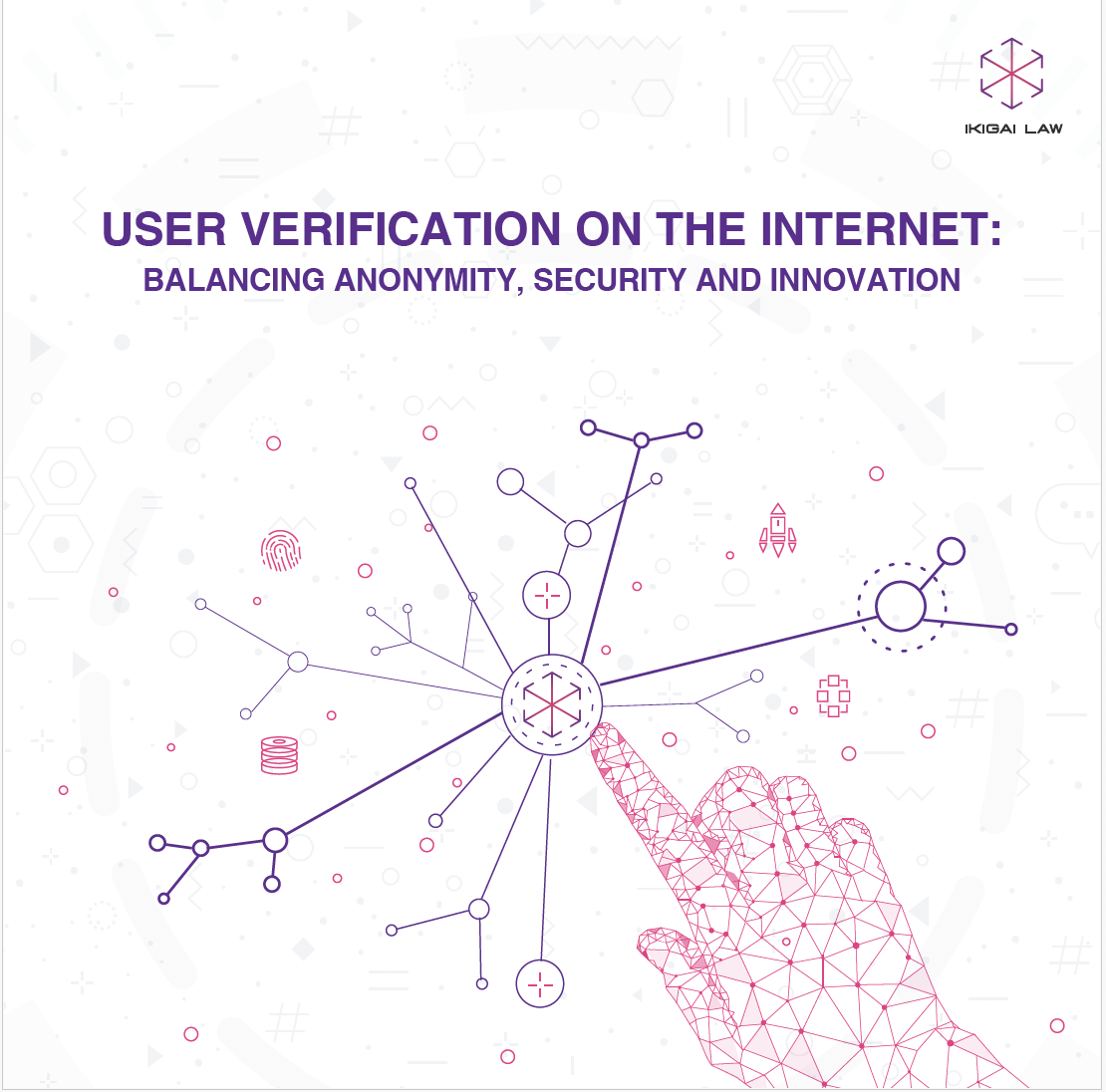1. Preliminary
1.1 Google hosted the fifth edition of its annual Google for India event on 19 September 2019. Google launched a range of products and services during this event and provided an insight into the work it is doing around technology in India. India’s information technology (“IT”) minister, Ravi Shankar Prasad, was also invited by Google to deliver a keynote speech. Vihang Jumle, associate at Ikigai Law, attended the live telecast of the session. This blog post presents the key takeaways from the event, the telecast recording of which can be found here.
2. Key points from presentations
2.1 Ravi Shankar Prasad, minister for law and justice, communications and electronics and information technology, the government of India.
Key note address.
a. Technologies that will succeed in India will benefit the world.
b. Google is not only a technology company but a folklore platform integral to the digital narrative of the world.
c. Use of Google has become a part of most Indians’ daily life.
d. ‘Digital India’ is designed to empower ordinary Indians with technology and drive digital inclusion. Google’s products in India are well-aimed at helping the government achieve this objective.
e. Google’s popularity has managed to penetrate most of rural India.
f. Digital payments in India amounted to INR 91.83 crores in November 2016 and increased to INR 330 crores by July 2019.
g. Indians should have a variety of platforms to explore digital technologies so long as the platforms are safe, secure and safeguard users’ privacy. The platforms should also have checks and balances to curb their misuse.
h. The Indian government is actively promoting the use of digital technologies and is laying out policies, such as the software product policy and open-source policy, to assist private companies in introducing more such technologies.
i. The Indian government is seeking assistance from Google to increase the accuracy of weather forecasts to the local level. The Indian government is also seeking assistance from Google on methods of taking technology closer to primary education especially in rural India.
j. The Indian government will develop 1,00,000 digital and self-sustaining villages. These villages will have Wi-Fi facilities and digital literacy platforms, amongst others. The Indian government has requested Google to adopt a few villages and accelerate the government’s digitisation process.
k. The Indian government has requested Google to assist it to realise the government’s USD 1 trillion digital economy objective in the next 5 years. The Indian government believes Google will play a crucial role in this transformation.
l. The government urges companies to manufacture in India and export to foreign markets.
2.2 Caesar Sengupta, general manager and vice president, payments and next billion users, Google.
Introduction & overview of the event.
a. Technology can enable innovation, inclusion and economic opportunities in India. Technology will play a crucial role in shaping the future of India’s economy.
b. Currently, 460 million Indians use the internet.
c. The scale at which technology ecosystems operate in India is “breath-taking” and Google considers itself fortunate to be able to witness India’s digitisation closely.
d. Small and medium enterprises are the backbone of India’s economy.
e. Google now lists approximately 26 million Indian businesses on Google Maps.
f. BHIM UPI processes more transactions than debit and credit cards in India. BHIM is also likely to be the future of global payments systems.
g. The internet in India still needs to reach approximately half of India’s population. Women in India tend to be more deprived of the internet than men. Google sees this situation as an opportunity and is working to build solutions to increase India’s internet penetration.
h. Google first develops applications for India and then uses the learnings to build similar applications for the world. Sundar Pichai, CEO of Google, says that India is helping Google to build products for the world.
i. Google Station, Google’s publicly available Wi-Fi hotspots, is now available on 4 continents covering 400 railway platforms. Google Station has expanded from railway stations to over 4000 venues, such as hospitals and government offices, to provide this service.
j. Google in partnership with Bharat Sanchar Nigam Limited will work to provide internet services in rural areas of Gujarat, Bihar and Maharashtra.
k. Google in partnership with Tata Trusts is teaching approximately 80,000 people to use the internet in different parts of India. These trained people are called “Sathis” who in their own capacity train more individuals to use the internet. All Sathis have collectively trained approximately 80 million individuals. By the end of 2019, Google aims to train individuals in at least half of India’s villages.
l. Google believes the future of the world should be built on inclusion, empowering people and providing adequate economic opportunity.
2.3 Jay Yagnik, Google fellow and vice president, Google artificial intelligence (“AI”).
Latest plans for AI in India.
a. AI has the potential to improve life in many ways. It will revolutionise research in medical sciences and natural sciences. It will allow us to preserve the environment and manage disasters better.
b. AI is currently at a nascent stage. Yagnik quoted Amara’s law which says “We tend to overestimate the effect of a technology in the short term and underestimate the effect in the long run” to inform the audience that the current state of AI was merely the tip of the iceberg and the upcoming applications of AI will be extraordinary and unseen.
c. Google aims to further the development of AI by:
- Developing AI-based applications and services.
- Democratising AI tools for businesses and researchers.
- Working with global partners in medical sciences, social sciences, natural sciences, and others.
d. Google launched ‘Google Research India’, a dedicated AI research facility in Bangalore. The lab will be headed by Manish Gupta, Infosys Foundation Chair professor at Indian Institute of Information Technology Bangalore. Google believes India will play a huge role in advancing AI and will create an impact on the global technology landscape. Details on collaborations with the AI facility to further Google’s support to PhD students and faculty will follow in the coming months.
2.4 Yossi Matias, vice president of engineering, Google.
Development in ‘AI for good’ and crisis response.
a. Google is trying to advance the available crisis management ecosystem in India.
b. India’s central water commission uses AI to forecast floods in several river basins in India. Google has increased its flood coverage by 12 times to provide approximately 800 people in India with river water flooding alerts. Google is working hard to update as many people as possible on the risks of river water flooding.
c. Google wants to play a larger role in people’s lives and is helping people in their daily lives by deploying its apps and services.
d. Observing people searching for content in vernacular languages, Google started providing search results in Hindi a few years ago. Since then, search queries in Hindi have increased 10 times and now form a huge portion of Google searches.
e. By the end of 2019, Google will allow its users to search for Google results in three more Indic languages (languages specific to the Indian subcontinent). Google’s navigation page for Indic languages will also be redesigned. Google has also seen a 2000 per cent increase in Indic language search queries.
2.5 Google Discover
Developments in Google Discover.
a. Google Discover’s layouts will be changed. Videos in all languages will be played in the Google Discover’s feed.
b. The Live updates feature of Google Discover, which includes sports scores and election results, will be improved over the coming days.
c. Google Discover will allow users more flexibility with customisation. The AI system behind Google Discover will learn from its users’ preferences to populate the feed with only relevant content.
2.6 Sapna Chadha, head of marketing, Google Southeast Asia and India; Harsh Kharbanda, product manager, Google Lens; Nitin Kashyap, product manager, Google Bolo.
The use of AI to empower Indians.
a. AI is having a transformative impact on people.
b. 750 million children struggle with reading words in India. Google believes information should be globally accessible and hence is continuing its work on Google Lens and Google Bolo.
c. Indians have used Google Lens, an app that allows you to recognise objects by pointing the phone’s camera at it, over 500 million times to shop for products, identify landmarks and search for textual content. Google is working to make the product more personalised to India.
d. A special version of Google Lens that allows users to translate texts on posters and banners was introduced a few weeks ago. It has been used by over 1,00,000 Indians. The feature will be launched across India in Tamil, Telegu and Marathi soon.
e. Google Bolo, an interactive speech-based reading app that teaches its users to read, will soon be available with five more Indic languages, Bengali, Marathi, Tamil, Telegu and Urdu. The current Hindi version has reached over 8,00,000 users, across 28,000 villages and towns.
f. Google Bolo plans to collaborate with global book alliances and NGOs to increase its language support on the app to over 100 regional Indian languages. Stories from widely watched shows in India such as Chota Bheem will be included.
g. Google Bolo works offline, features no advertisements and ensures that all sensitive information stays within the mobile device.
2.7 Manuel Bronstein, vice president for Google Assistant, Google.
Developments in Google Assistant.
a. Google Assistant is now available in 30 languages across 30 countries.
b. Within two years of introducing Hindi in Google Assistant, it has become the second most used language on the app behind English. Hindi will soon be available on Android TV’s Google Assistant.
c. Over 1 million people used Hindi to ask Google Assistant about sports score updates.
d. Video news will soon be available over Google Assistant. Partner channels will include, NDTV 24×7, ABP News, SunTV, NDTV India, TV9, CNBC, Asianet News, Aaj Tak, DD National, Republic, CNN News18, TV5 and TimesNow.
e. Google Assistant will soon allow users to directly order meals.
f. A telephonic version of Google Assistant called ‘Phone line’ is now available for Vodafone Idea users in Lucknow and Kanpur for free. Users can dial 0008009191000 on their mobile devices and interact with Google Assistant over call. This medium allows users to indirectly access the internet through Google Assistant.
g. Google Interpreter will soon allow simultaneous and real-time translation of two languages. This will allow two people speaking different languages to communicate with the Google Interpreter translating each language for either of the speakers.
2.8 Ambarish Kenghe, senior director of product, Google Pay, Google.
Developments in Google Pay.
a. Google launched Google Pay with the objective to make payments secure in India.
b. Google Pay led the usage of BHIM UPI to increase by 54 times. The number of transactions has increased from 17 million to 918 million over the last 2 years. Google Pay has over 67 million monthly users and these users have transacted over USD 110 billion.
c. Google Pay uses an entity-based design which likely led to its popularity.
d. Google Pay in India will soon support ‘tokenised cards’ feature that will allows users (or payers) to make card-based transactions without the user having to enter their card details. Google Pay currently partners with VISA, Axis Bank, HDFC Bank, Kotak Mahindra Bank, Standard Chartered and SBI Bank to provide this feature. Google Pay may partner with Mastercard and RuPay for this service in the coming months.
e. Google Pay actively maintains a ‘donation’ gateway that allows its users to directly donate money to different organisation and for various causes.
f. Google Pay Business will soon be introduced in India to allow merchants to prove the legitimacy of their business themselves through an in-built interactive platform and start accepting payments from customers via BHIM UPI.
g. Google Pay will introduce ‘Spot Platform’ that will allow its users to order meals directly from the app without downloading any other food-ordering apps. All other features, such as menus, offers, etc. will be available within the Google Pay app. Users can also scan ‘Spot codes’ of different restaurants and place orders online after arriving at the restaurant to avoid waiting in queues.
h. Google Jobs is available on the Google Play Store. The features of this app will be modified to assist its users in finding relevant jobs. Users’ profiles on the app will remain private and users will be able to apply for different openings with partnered companies in a single tap. Google Jobs has also partnered with the Skill India Program and National Skill Development Corporation.
(Authored by Vihang Jumle, associate with inputs from Tuhina Joshi, policy associate at Ikigai Law)










